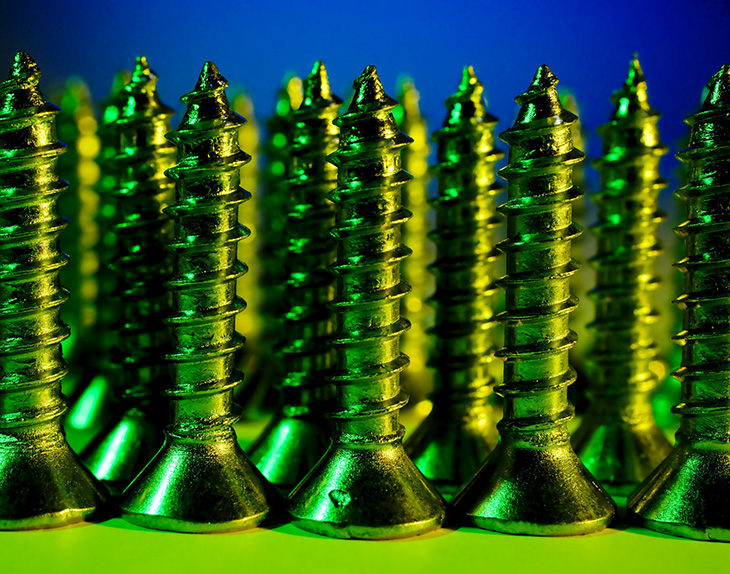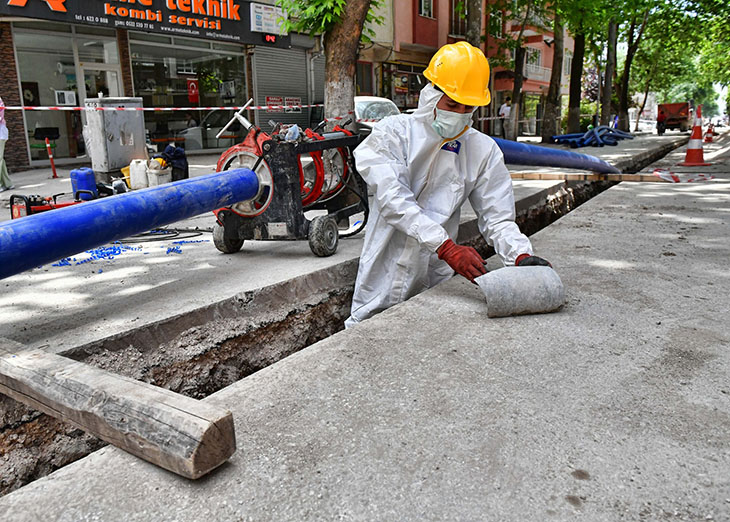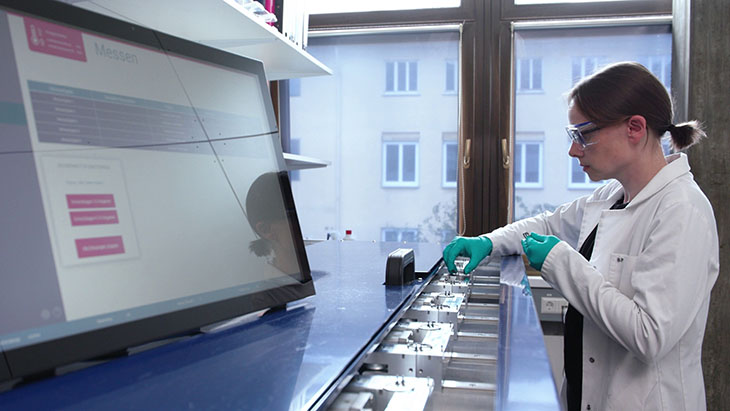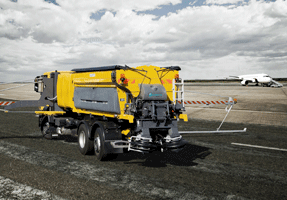Five Load Moving Problems and How to Overcome Them
Written by
Paul Jakse, vice president, sales, AeroGo
July 2017
Moving heavy loads and equipment through industrial facilities can turn out to be a logistical and expensive nightmare. Whether the load is a 500-pound engine block or 60-ton construction equipment, its move requires careful planning and execution.
Consider the common process for load movement. A crane may seem like an all-purpose solution, but its use will impact production and manpower. The crane is usually the most expensive of choices, due to the time required for rigging on each move, its inherent slow speed, and the unusable floor space below as the load passes overhead. Forklifts are less expensive to employ, but their use comes with caveats. Although a forklift consumes a relatively small footprint, the operating area required for a load move is massive to the point of halting production until the move is completed. If the planning is less than sufficient, the interruption may be unacceptably lengthy and costly.
Five problems apply to every type of load or equipment movement. Left unresolvedprior to the move, they will obstruct and perhaps shut down a significant part of the production process. All are solvable through the use of upgraded and enhanced technologies.
Problem #1: Safety
Safety is one of the top priorities in every facility and yet, due to time constraints or equipment availability, some companies take shortcuts that are likely to alarm risk managers and potentially harm employees.
Here is a specific example from an actual case study at a large construction equipment manufacturing facility. A worker stood between two multi-ton components, which he pulled down the line with a manually operated drive system. The potential for injury should have been very concerning. Had a drive disengaged, which is always a possibility, the worker could have been crushed. Fortunately, he was able to complete it without incident. Situations like these often draw the ire of OSHA, making it difficult to point with pride at a safety-focused environment, when such incidents are overlooked.
Accident findings from government agencies verify that when it comes to safety, too many facilities have a long way to go. The U.S. Bureau of Labor Statistics in its 2009 report on overhead crane accidents attributed 90 percent to human error, while others were blamed on operations that exceeded the crane’s capacity. Additional causes included contact with a power source and objects falling from the crane. Even more unsettling was the bureau’s finding showing an average of 80 lift and material handling workers are killed every year from overhead crane accidents.
The casualty rate is not as high for forklifts, but the fatalities and their causes bear equal scrutiny. According to the Department of Labor’s OSHA findings for 2014 and 2015, catastrophic forklift accidents included tip-overs and a fatal hit by a forklift of a worker because the operator could not see him. Other fatalities are equally disturbing. One worker was killed by a truck that fell from a forklift, and another worker lost his life when struck by a forklift basket when the vehicle overturned.
Every year, these accidents recur despite management’s intense efforts to impress the importance of safety precautions on supervisors and workers. Fatalities cannot be attributed solely to human error. It is important to understand that the moving devices themselves—a crane with its counterweights and the forklift with cargo—may hamper an operator’s vision and are inherently dangerous. Their use increases the possibility of accidents, injuries and death.
A safety program focuses on preventing human error, but that alone is insufficient. A viable safety initiative fully examines the hazards associated with all load movers. The next step is to evaluate all options that reduce risk to employees and property, while offering control and flexibility for safe load movement.
Problem #2: Size
Size and shape of the load require careful configuration whether the machinery moving it is a crane or forklift. Any miscalculation could lead to equipment and property damage as well as injury. Traditional movers, regardless of their weight capacity, are limited as to the size of the load that is being moved from Point A to Point B. Disassembling the load may be necessary, but those steps will increase the time required to complete the move and can hamper production.
Smaller load movement, even the simple act of pushing a cart across an aisle, has its own limitations. The industry standard is 30 pounds of force per worker, but studies have shown that a standing man is only capable of 25 pounds.
For reasons of size and safety, companies are increasingly turning to an alternative load-moving method. Air caster technology has been around for many years but has been enhanced for industrial load movement. Air casters are bags that capture air and create lift, enabling load movement by floating the load on a film of compressed air. Varying load weights and dimensions, often a problem with the traditional material handling methods, are resolved with the simple addition of more air casters that facilitate the move regardless of its size.
Problem #3: Costs
There is no getting around it. Cranes are the most expensive load movers, even if the crane is already in-house as is the case with many facilities. A 30-ton crane may have been the answer years ago, but not today. The issue here is the growing demand for heavier and more significantly dense equipment. One example is a pressure vessel or heat exchanger. Today’s heat exchangers are substantially heavier than models available less than 20 years ago. If they are too heavy for a lower tonnage crane in the facility, the company faces a major costly infrastructure decision—whether to invest in something as big and expensive as a 100-ton crane or seek other options. CEOs and CFOs will not appreciate the reduction of margin and a lower bottom line portended by these investments.
Massive vehicles, transformers, diesel engines and even mammoth wind turbines may prove to be too much for in-house load moving. The longer the size problem continues, the greater the loss of opportunity. A business may be unable to keep up with today’s demands for increased production speed, flexibility and more options to deal with larger weights and sizes. Inevitably, manufacturers are likely to turn to alternative technologies that address these challenges.
Management and supervisory personnel need to consider less costly alternatives for updating a production process that has changed dramatically in only a few years. Their future growth is likely to depend on it.
Problem #4: Movement flexibility
If there is a classic model of relying on past practices despite their drawbacks, the use of load movers that are limited to only one direction would surely qualify. An obvious example is a drag chain conveyor. If any unit on the line has custom features, drag line speed slows and so does the entire process. In-floor rail systems suffer the same limiting characteristics. Forklifts have more directional options, but their turn radius is limited by cargo size and floor spacing. Movement flexibility is a necessity in a number of industries such as locomotive engine refurbishing. Traditional load moving methods take an inordinate amount of time since these engines weigh from 14 to 30 tons. Anxious to avoid the delays associated with cranes, companies generally have their workers take their tools and perform their tasks the same way earlier generations did. They simply walk around the engine to work on each portion of the rebuild.
Air caster systems are capable of actually spinning engines around as needed, so workers can access tools and new parts easily.
Problem #5: Potential damage to the facility
Despite safety being the overriding concern regarding cranes and forklifts, managers and supervisors have to be cognizant of exposure to damage to the facility and inventory. All too often, the load comes into contact with other inventory despite the most careful efforts. The frequency of these incidents is most pronounced by loads swinging from overhead cranes. The damage can be costly.
Forklifts have their own facility damage issues, which are not only due to accidents. Some of the most expensive damage they cause occurs when the load reaches its destination and is placed on the floor. Facilities have tended to opt for epoxy coating for their floors because of its appearance and relative toughness, yet the load deposited by forklifts often scratches the coating inevitably leading to repairs. Fixes are expensive. Epoxy can cost up to $8 per square foot. Multiply that by a 50,000 square foot facility and the company is faced with an unwanted, but major outlay.
There is no reason to accept the ongoing issues with these problems. Instead of moving loads overhead, maybe it is time to consider another option that addresses all five common problems.
Alternative load-moving technology
Air caster technology, around for more than a half-century, has been improved to the point that the air casters have been successfully used for load movement from a 500 pound engine block, to 60 ton construction equipment and up to a 2,900 ton ship. Additional casters can be added for load control and adjustment of size and weight. A single operator, when accompanied by powered drive systems with controls, can easily maneuver a load in any and every direction, rendering the straight line movement of the overhead crane or conveyor less effective.
Companies that are relying on air casters have found them to be safe, less likely to damage property and easily controlled. At the Carrier Chiller plant in Charlotte, N.C., where chillers and commercial air conditioning units are produced, Jens Lamba, senior product engineer, attests to the casters’ value. “The casters have made it a continuous flow through our manufacturing facility instead of having stop/starts,” Lamba said, “They have helped to significantly lower our production costs.”
Lamba said that prior to purchasing an air caster system, the Carrier plant had relied mostly on overhead cranes, and the company was not happy with their performance. “They were less flexible and made us look more like a job shop than a continuous production facility,” he recalled, “They tended to slow the process.”
On the site of the facility where the air casters are used, Carrier manufactures heat exchangers, melt compressors and water-cooled chillers. Loads are mounted on a table supported by air casters. Load weight is not an obstacle, according to the engineer. “It’s anywhere from 25,000 pounds to 125,000 pounds,” Lamba said.
Planning and execution
Lamba’s comments about continuous production should ring true for every facility concerned about cost-efficient load movements without jeopardizing the safety of employees and the facility. Risk managers need to take a closer look at alternatives along with their track record of safety, flexibility and positive impact on the production process.
As the experience with air casters has shown, facilities can have safety and production throughput without negatively impacting either one. It starts with a thorough understanding of the safest and best use of the load mover. Management should insist on the presence of safety officers for every demonstration when considering alternatives. Then re-examine floor space utilization to determine the best type of load mover. Every load movement requires thoughtful planning and set-up before scheduling a move. All five problem areas have to be addressed and resolved before execution.
Air casters, although not nearly as expensive as cranes, represent an investment and require due diligence prior to purchase. Their value proposition should be calculated in terms of safety, ease of movement, avoiding potential for damage, reducing manpower hours for load movement and, of course, saving money for the production facility.
The goal is to safely increase production in order to improve productivity and profits.
About the Author:
Paul Jakse is vice president, sales of AeroGo, Inc., Seattle, Wash. AeroGo manufactures innovative load moving equipment, utilizing wheels and hovercraft technology, to move heavy, awkward, or delicate loads in factories. Tel: (866) 537-0153. Visit the company website: www.aerogo.com.
























